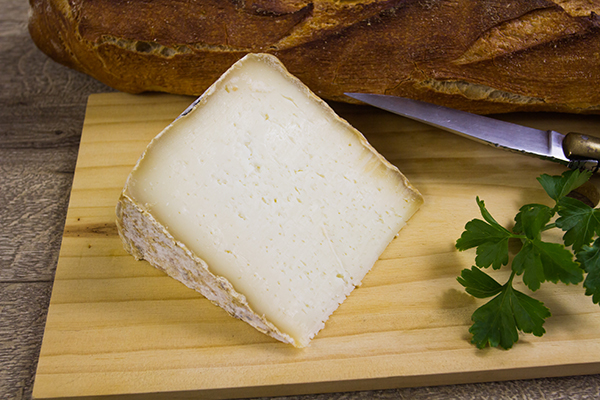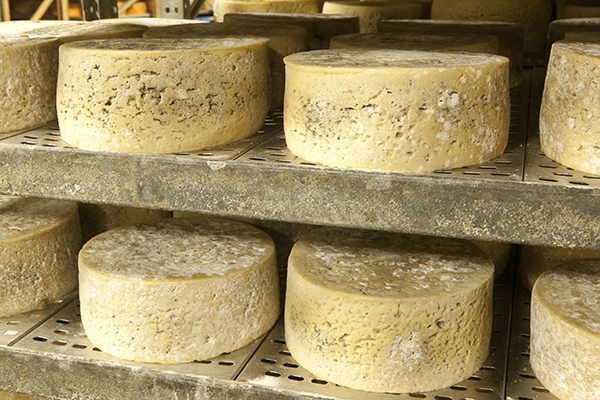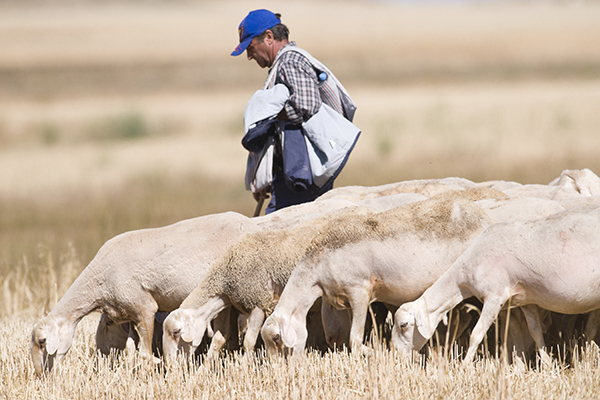Sheep’s milk cheeses, intense and full of personality
Cheeses made with sheep’s milk are enjoyed for their intense flavour and their versatility, as they combine well with virtually anything. Their nutritional properties also make them a very complete type of cheese. Sheep’s milk is highly nutritious and has large amounts of vitamin A, D, E and calcium.
fresh food
Share

Raw or pasteurised milk?
The main difference between these cheeses is the treatment the milk goes through before the cheese is made. In the case of raw cheeses, the milk is not subjected to a heat treatment, so it maintains its microbial flora intact and, because of this, cheeses made with raw milk have more intense flavours than those made with pasteurised milk.
The pasteurisation of milk consists of applying a heat treatment to it, which reduces its microbial load. Some types of cheeses require bacteria to be added later in the process through technological properties which favour the correct evolution of the cheese.
Despite their differences, cheeses made with either raw or pasteurised milk need to go through exhaustive quality controls during the cheese-making process, which guarantee they are safe for human beings to eat.
The most well-known sheep’s cheeses:
- Manchego cheese: with its certificate of origin, it is made with milk from La Mancha sheep, which originated in this region. It is a full-fat cheese which can be soft, semi-hard, hard or reserve. It is well-known both nationally in Spain and internationally. The first references to the cheese appear in historic documents like Don Quixote.
- Burgos Cheese: Mainly made from sheep’s milk supplemented with sodium chloride and animal rennet. This cheese is normally round, rindless, white in colour and milky, with a soft flavour.
- Torta del Casar (Casar cake): this is a pure sheep’s cheese made in the locality of El Casar (Cáceres). It is made with raw sheep’s milk and vegetable rennet from the cardoon. It is creamy, easy to spread, it has a light yellow colour and an unusual flavour and aroma.
- Cabrales cheese: : this is made using artisan methods in Concejo de Cabrales (Asturias) and its surroundings. It is a blue cheese, made with raw sheep, goat or cow’s milk, or even a mixture of these. Its flavour is intense and very characteristic.

How do you store a cheese?
When you want to store a cheese at home, the main thing to be aware of is the temperature and humidity. If the temperature is high, the degradation process in the cheese will accelerate and, the opposite is true if the temperature is too low, and the process will slow down. The more humidity there is the more like it is that the rind and the cut part of the cheese will become mouldy, and if humidity is low, it might even dry the cheese out.
Therefore, to conserve a cheese once it has been opened, the best thing to do is to cover the cut area with greaseproof paper and keep it well covered in a vegetable drawer in the fridge (in the lower part of the fridge).
Don’t be surprised if the cut part of the cheese becomes mouldy, since this forms part of its natural flora.
When you want to eat it, the best thing to do is to take it out of the fridge half an hour beforehand and leave it at room temperature. And if it is vacuum wrapped, it is best to remove it from its packaging so that it loses that packaged aftertaste.







